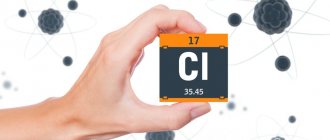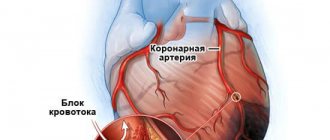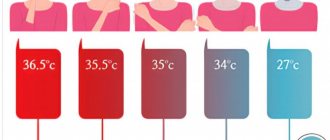What is carbon monoxide and why is it dangerous?
Carbon monoxide (carbon monoxide, or carbon monoxide, chemical formula CO) is a gaseous compound formed during combustion of any kind. What happens when this substance enters the body?
After entering the respiratory tract, carbon monoxide molecules immediately end up in the blood and bind to hemoglobin molecules. A completely new substance is formed - carboxyhemoglobin, which interferes with the transport of oxygen. For this reason, oxygen deficiency develops very quickly.
On this topic ▼
Household gas appliances: rules of operation and use
The most important danger is that carbon monoxide is invisible and not perceptible in any way, it has neither odor nor color, that is, the cause of the illness is not obvious, it is not always possible to detect it immediately. Carbon monoxide cannot be felt in any way, which is why its second name is the silent killer. Feeling tired, lack of strength and dizzy, a person makes a fatal mistake - he decides to lie down. And, even if he later understands the reason and the need for going out into the air, as a rule, he is no longer able to do anything. Many could be saved by knowledge of the symptoms of CO poisoning - knowing them, it is possible to suspect the cause of the illness in time and take the necessary measures to save it.
Forms of poisoning
In medicine, there is a clear distinction between household gas poisoning:
- light form;
- medium shape;
- severe form.
In a mild form, there is dizziness, weakness in the body, a desire to lie down and sometimes pain in the chest. In this state, a person can independently leave the room and seek help.
The middle form is more dangerous. The condition sharply begins to deteriorate; in addition to the symptoms of a mild form, impaired coordination of movements is added, the pulse quickens, and consciousness becomes confused.
In a severe form of poisoning, a person is unconscious, he may develop symptoms of pulmonary edema, and the heart and brain are affected.
There is also an instant form of household gas poisoning. In this case, after a few breaths, asphyxia occurs and the victim loses consciousness. This is the most dangerous form, as the person dies within a few minutes.
Symptoms and signs
The severity of the lesion depends on several factors:
- state of health and physiological characteristics of a person. Weak people, those with chronic diseases, especially those accompanied by anemia, the elderly, pregnant women and children are more sensitive to the effects of CO;
- duration of exposure of the CO compound to the body;
- concentration of carbon monoxide in inspired air;
- physical activity during poisoning. The higher the activity, the faster poisoning occurs.
Severity
Degrees and symptoms of carbon monoxide poisoning
(Infographics are available via the download button after the article)
Mild severity is characterized by the following symptoms:
- general weakness;
- headaches, mainly in the frontal and temporal regions;
- knocking in the temples;
- noise in ears;
- dizziness;
- visual impairment – flickering, dots before the eyes;
- unproductive, i.e. dry cough;
- rapid breathing;
- lack of air, shortness of breath;
- lacrimation;
- nausea;
- hyperemia (redness) of the skin and mucous membranes;
- tachycardia;
- increased blood pressure.
Symptoms of moderate severity are the preservation of all the symptoms of the previous stage and their more severe form:
- fogginess, possible loss of consciousness for a short time;
- vomit;
- hallucinations, both visual and auditory;
- violation of the vestibular apparatus, uncoordinated movements;
- pressing chest pain.
Severe poisoning is characterized by the following symptoms:
- paralysis;
- long-term loss of consciousness, coma;
- convulsions;
- dilated pupils;
- involuntary emptying of the bladder and bowels;
- increased heart rate up to 130 beats per minute, but it is faintly palpable;
- cyanosis (blue discoloration) of the skin and mucous membranes;
- breathing problems – it becomes shallow and intermittent.
What is carbon monoxide poisoning?
As a result of the low ability of the brain to function without oxygen, during toxic oxide damage, the first thing that appears is a neurological failure. The main features include:
- Painful sensations of pressure in the head area (mostly the temple and forehead area suffers).
- Dizziness occurs and loss of consciousness is possible.
- Nausea and gag reflexes are present.
- Noise is generated in the ear canals.
- Visual disorders (patients complain of double vision of external objects, abnormal color perception).
- Gait disturbance (unsteadiness appears).
- A sharp decrease in the level of reaction.
- With greater exposure to the gas, convulsions of a tonic and clonic nature begin.
- Overheating of the body.
- The process of depression of consciousness (the patient may fall into a coma).
- There is a possibility of memory loss (retrograde amnesia).
- Deviations of the cardiovascular system progress (tachycardia, disturbances in heart rhythm and its conductivity).
- The pain moves to the chest area.
- Bronchitis or toxic pneumonia is formed, which are characterized by shortness of breath, dry cough, and high body temperature.
The euphoric stage of the disease is manifested by psychomotor disorders. The patient experiences abnormal arousal, good mood, the absence of critical statements in relation to his health abruptly gives way to delusions with hallucinations. They can cause serious disturbances in the patient's consciousness. The syncopal form has a sharp decrease in blood pressure and collapse. In the case of a rapid toxic process, at the end of a short period of convulsive manifestations, amnesia and death occur.
Risks
Timely rescue of the victim from a fire trap contributes to the spontaneous disappearance of signs of the effects of carbon monoxide on the functionality of the main body systems without consequences. When diagnosed with intoxication of the second and third stages, the patient may experience neurological disorders. The patient has been experiencing painful sensations in his head for a long time. There is a possibility of mononeuritis spreading in different places, decreased muscle strength, Parkinson's tremor, etc. Complications occurring in the circulatory system are distinguished by intracardiac obstruction, the formation of blood clots in the vascular channels. Inhalation of carbon monoxide in high concentrations while carrying a child is fraught with the formation of abnormal diseases and fetal defects. There are many fatal cases of intoxication in history.
Atypical forms
There are two of them - fainting and euphoric.
Symptoms of fainting:
- pallor of the skin and mucous membranes;
- decreased blood pressure;
- loss of consciousness.
Symptoms of the euphoric form:
- psychomotor agitation;
- mental dysfunction: delirium, hallucinations, laughter, strange behavior;
- loss of consciousness;
- respiratory and heart failure.
Common symptoms of substance overdose
Emergency drug treatment for drug poisoning is often delayed, since even family members are sometimes unable to differentiate the painful addiction of a loved one.
There are several common signs of substance poisoning:
- pale skin;
- skin is moist, sticky;
- pupils do not react to light;
- the pupils are too wide, or, on the contrary, narrow;
- speech becomes slurred;
- change in behavior: excessive lethargy or activity;
- the appearance of a specific odor from the skin and hair.
First aid for victims
It is very important to provide first aid promptly, as irreversible consequences occur very quickly.
First, it is necessary to take the victim out into fresh air as quickly as possible. In cases where this is difficult, the victim must be put on a gas mask with a hopcalite cartridge as quickly as possible and given an oxygen cushion.
Secondly, you need to make breathing easier - clear the airways, if necessary, unfasten clothes, lay the victim on his side in order to prevent possible tongue retraction.
Thirdly, stimulate breathing. Apply ammonia, rub the chest, warm the limbs.
And most importantly, you need to call an ambulance. Even if a person appears to be in satisfactory condition at first glance, it is necessary that he be examined by a doctor, since it is not always possible to determine the true degree of poisoning only by symptoms. In addition, promptly initiated therapeutic measures will reduce the risk of complications and mortality from carbon monoxide poisoning.
If the victim’s condition is serious, it is necessary to carry out resuscitation measures until doctors arrive.
First aid for carbon monoxide and household monoxide poisoning.
Category: Articles.
Carbon monoxide is a toxic compound (CO). Can be fatal at concentrations in air of 0.1% over an hour. Contrary to popular belief, carbon monoxide is colorless and odorless. It is formed mainly during the combustion of organic compounds (fuel, wood, coals, paper, etc.) under conditions of oxygen deficiency, namely: during the operation of a fuel engine, during improper operation of stoves and boilers, during fires, during smoking.
The toxic effect of CO is due to its incorporation into the hemoglobin molecule, i.e. formation of carboxyhemoglobin. Carboxyhemoglobin is a fairly strong compound; under normal conditions, its half-life in the body is about 5 hours. Unlike hemoglobin, carboxyhemoglobin does not transport oxygen, as a result of which, at a high concentration in the body (and accordingly low concentration of hemoglobin), oxygen starvation of organs and tissues begins, which can lead to severe intoxication and even death.
Signs (symptoms) of carbon monoxide poisoning: general malaise, muscle weakness, nausea and vomiting, dry cough, disorientation, hallucinations, disturbance of consciousness, headache, redness of the face, in case of severe intoxication - on the contrary: cyanosis of the skin, possible convulsions, loss of consciousness, in severe cases: dilated pupils, cessation of breathing and cardiac activity
Providing first aid for carbon monoxide poisoning:
- When providing first aid, as well as when evacuating victims of fire or other emergencies involving CO, you should remember that carbon monoxide has no odor! You should breathe as little as possible in a room where carbon monoxide may be present. If possible, it is necessary to quickly ventilate the room.
- The victim must be evacuated to fresh air.
- Call an ambulance.
- Free the victim from clothing that is restricting breathing, unbutton the shirt buttons, loosen the belt, etc.
- If the patient is conscious, give strong sweet tea and an alkaline drink (a teaspoon of soda per glass of warm milk).
- In case of loss of consciousness, absence of pulse and breathing, artificial respiration with indirect cardiac massage should be started.
Domestic gas poisoning
Domestic gas is a mixture based on natural gas used for domestic needs. Natural and domestic gas differ in composition and characteristics. Source: depositphotos.com Natural gas contains methane - from 80% or more (ideally about 100%) and up to 20% of homologues (ethane, propane, butane). In addition to hydrocarbons, its composition includes water vapor, hydrogen, hydrogen sulfide, carbon dioxide, nitrogen and helium. Natural gas is odorless and burns with an even blue flame. Gas with a changed composition - household gas - is supplied to residential buildings or boiler houses. At gas distribution stations, to create a warning effect, an odorant additive, ethyl mercaptan, is introduced into its composition. Thanks to this organosulfur compound, home gas acquires a specific pungent odor and a reddish flame color. Methane, which is the main component of household gas, is lighter than air and rises when leaked. In a volume of 4.5 to 17% of the total amount of air in the room, it acquires explosive characteristics. Despite the fact that methane is a low-toxic paraffin hydrocarbon, when it accumulates in an unventilated, isolated room, it causes poisoning in humans associated with acute oxygen starvation of organs and tissues. The concentration required for the appearance of symptoms of intoxication should be at least 25-30% of the total volume of air in the room. With systematic long-term exposure, methane can have a neurotoxic effect. How does household gas poisoning occur? - Acute intoxication develops when the gas is inhaled. Household gas in indoor air can appear in several cases: loose connections at the junctions of gas pipes; violation of the integrity of gas pipes and hoses; loose closure of the flame control valve handle on the gas stove; malfunction of gas equipment; deliberately organizing a gas leak for the purpose of committing suicide or murder. Leakage of household gas at night is especially dangerous, since developing hypoxia is superimposed on the physiological state of sleep and remains unnoticed, while the victims die without regaining consciousness. Symptoms of poisoning Depending on the concentration of gas in the air, the degree of poisoning varies from mild to severe, in extreme cases - lightning fast. In case of mild poisoning, the following appear: noise, ringing in the ears; headache; dizziness; pain and burning in the eyes, nasopharynx; lacrimation, copious discharge from the nose. Source: depositphotos.com Moderate poisoning is characterized by the addition of symptoms of damage to the central nervous, respiratory and cardiovascular systems to the above-described complaints: drowsiness; depression and confusion; disturbance of orientation in time and space; incoordination; hallucinations, delusions; vomit; hyperemia of the skin; severe muscle weakness; rapid, possibly arrhythmic pulse; decrease in blood pressure; dyspnea. In case of severe domestic gas poisoning, the victim is unconscious, does not respond to stimuli, shallow, unproductive breathing, severe shortness of breath, cyanotic coloration of the skin, convulsions, and an arrhythmic thread-like pulse. Death is possible due to acute heart failure, paralysis of the respiratory or vasomotor centers. The fulminant form develops within a few minutes at extremely high gas concentrations in the air. After 2-3 breaths, the victim loses consciousness, symptoms of severe poisoning appear, ending in death or coma (in case of immediate evacuation from the affected area). First aid for household gas poisoning Interrupt contact with the gas by evacuating the victim from the affected area. Provide the victim with access to oxygen by opening a window and unfastening tight clothing. Give a position with an elevated foot end. Rub the chest and limbs to activate blood circulation. Provide plenty of fluids (still water, all kinds of decoctions, tea, milk). If vomiting, prevent tongue retraction and aspiration of vomit by turning the victim’s head to one side. If signs of clinical death appear (lack of consciousness, breathing, reaction to light and pulsation in the carotid arteries), perform basic cardiopulmonary resuscitation (artificial respiration and chest compressions) until the ambulance team arrives. When is medical attention required? In case of household gas poisoning, seeking medical help is necessary in any case. In addition to the ambulance team, it is necessary to call emergency services, since it is not always possible to independently identify the cause of a gas leak and assess the degree of danger. Critical in this case is the accumulation of household gas in an insufficiently ventilated room, which can lead to an explosion. Possible consequences The most typical complications of household gas intoxication: respiratory diseases (laryngitis, bronchitis, bronchopneumonia, pneumonia); chronic heart failure; decreased cognitive function. Since the development of long-term consequences cannot be ruled out, after the end of hospitalization the victim is recommended to undergo preventive medical examinations at least once every six months. Removal from observation occurs no earlier than after 3 years. Prevention
Systematically monitor the condition of gas equipment and maintain it in good condition. If a technical defect is detected, or if a possible leak is suspected, immediately stop the gas supply and call a specialized repair team. Ensure adequate ventilation in areas with gas equipment. If gas appliances do not have an automatic emergency system, do not leave them uncontrolled. Do not use gas stoves to heat rooms, especially at night. At the end of using gas, close the taps and valves on gas appliances, and when using cylinders, close the cylinder valves. When leaving a room with gas equipment for a long time, turn off the gas supply to the gas pipeline. Do not allow the use of gas equipment in children's games, do not leave children alone near stoves or gas cylinders. Make sure that the burners remain dry during cooking and do not allow them to be filled with liquid. Source website
Instructor-valeologist of the Central District Hospital
Sources of danger
Nowadays, cases of poisoning occur a little less frequently than in those days when heating of residential premises was predominantly stoves, but there are still enough sources of increased risk.
On this topic ▼
Rules for storing and using gas cylinders
Potential carbon monoxide poisoning hazards:
- houses with stove heating and fireplaces. Improper operation increases the risk of carbon monoxide entering the premises, thus causing entire families to burn out in their homes;
- baths, saunas, especially those that are heated “on black”;
- garages;
- in industries using carbon monoxide;
- long-term stay near major roads;
- fire in a closed space (elevator, shaft, etc., which are impossible to leave without outside help).
Useful article: Furnaces requirements and fire safety rules
Operating principle
When a person inhales air that contains a high content of carbon monoxide, it is transported to the respiratory part of the body, where it is absorbed by the blood cells. The chemical component is quite similar to hemoglobin, myoglobin and enzymes that contain iron. Carbon dioxide freely enters into a process with these elements, during which a type of oxygen is formed that is unable to be transported into carboxyhemoglobin tissues. A patient with this diagnosis develops hypoxia. Slow dissolution of compounds has an adverse effect on the nutritional properties of internal organs and tissues. In combination with this, a process of unstable operation of biochemical phenomena occurs, which is based on the functioning of iron-containing enzymes. With the accumulative activity of under-oxidized metabolic products, additional poisoning occurs, spreading to the central nervous system and other organs.
Only numbers
- A mild degree of poisoning occurs already at a carbon monoxide concentration of 0.08% - headache, dizziness, suffocation, and general weakness occur.
- An increase in CO concentration to 0.32% causes motor paralysis and fainting. After about half an hour, death occurs.
- At a CO concentration of 1.2% and above, a fulminant form of poisoning develops - in a couple of breaths a person receives a lethal dose, death occurs within a maximum of 3 minutes.
- The exhaust gases of a passenger car contain from 1.5 to 3% carbon monoxide. Contrary to popular belief, you can get poisoned while the engine is running not only indoors, but also outdoors.
- About two and a half thousand people in Russia are hospitalized annually with varying degrees of severity of carbon monoxide poisoning.
Carbon monoxide (carbon monoxide) // Harmful substances in industry. Handbook for chemists, engineers and doctors / Ed. N.V. Lazarev and I.D. Gadaskina. — 7th ed. - L.: Chemistry, 1977. - T. 3. - P. 240-253. — 608 p.
Carbon monoxide concentration and symptoms of poisoning
Prevention measures
In order to minimize the risks of carbon monoxide poisoning, it is enough to follow the following rules:
- operate stoves and fireplaces in accordance with the rules, regularly check the operation of the ventilation system and promptly clean the chimney, and trust the laying of stoves and fireplaces only to professionals;
- do not stay near busy roads for a long time;
- Always turn off the car engine in a closed garage. It only takes five minutes of engine operation for the concentration of carbon monoxide to become lethal - remember this;
- When staying in a car for a long time, and even more so sleeping in a car, always turn off the engine;
- make it a rule - if symptoms arise that suggest carbon monoxide poisoning, provide fresh air as soon as possible by opening the windows, or better yet, leave the room. Do not lie down if you feel dizzy, nauseous, or weak.
Remember - carbon monoxide is insidious, it acts quickly and unnoticed, so life and health depend on the speed of measures taken. Take care of yourself and your loved ones!
Symptoms to look out for first
In practice, a common symptom indicating that household gas poisoning has begun is headache. It is aching and dull in nature and has no specific localization. Such pain may not always be associated with poisoning, but is attributed to other reasons - overwork, a cold.
Another symptom that people often ignore is chest pain. It can also be attributed to other diseases - ischemia, osteochondrosis, VSD.
A common sign of gas poisoning is dizziness, loss of orientation and loss of ability to control one's actions. This may be expressed in the inability to hold objects in hands, or a staggering gait. The consequence of increasing intoxication may be confusion and inability to answer simple questions.
In addition, a high concentration of gas in the air usually provokes attacks of nausea and uncontrollable vomiting.
If you find any of these symptoms in yourself, then this is a reason to be wary, and if several manifestations are detected at once, then you should sound the alarm! Remember that household gas poisoning develops very quickly, and the time from the onset of intoxication to loss of consciousness can take a matter of minutes. In this case, you should immediately leave the room for fresh air and consult a doctor.










